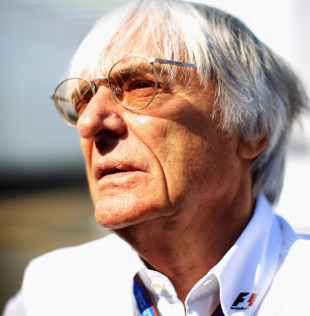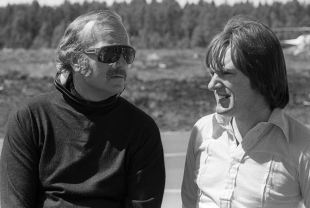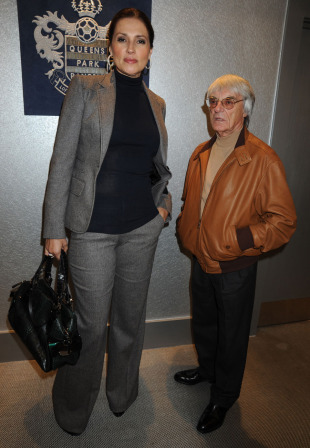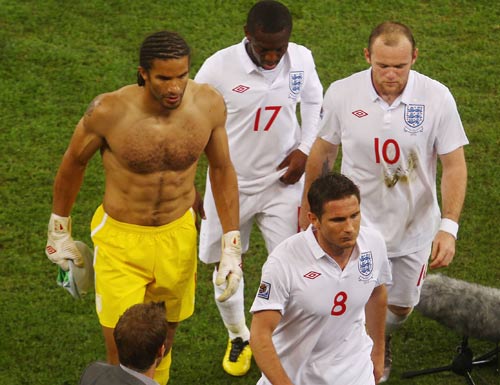
- News:
-
Ecclestone keen to see Mosley return to FIA
- Feature:
-
Bernie Ecclestone timeline
- Feature:
-
Bernie Ecclestone - a life in F1
- Feature:
-
Ecclestone on F1 and its future
- Drivers:
- Colin Chapman
- |
- Bernie Ecclestone
- |
- Stuart Lewis-Evans
- |
- Nelson Piquet
- |
- Jochen Rindt
- |
- Sir Frank Williams
- Teams:
- Brabham
1930: Bernard Charles Ecclestone is born in a small village near Bungay, Suffolk. The son of a trawler captain, he spends his childhood in Wangford before moving to Bexleyheath in southeast London.
1946: Leaves school at 16 years old to work as an assistant in the local gasworks after a friend of his father offers him a job. His passion is motorbike scrambling and, with resources scarce following the war, he sets up a second-hand parts business to fund his hobby.
1949: Competes in his first serious car race in a 500cc Formula 3 car at his local race track Brands Hatch. By this time he has grown his business to include second-hand car sales and auctions.
1951: Acquires a Cooper Mk V and starts racing more regularly, taking the odd win at Brands Hatch. However, he abandons his budding career in 1956 after a collision with Bill Whitehouse sees his car end up in the spectator car park. "I had woken up four or five times in hospital," he later said. "I realised that I didn't want to risk lying in bed for the rest of my life looking up at the ceiling."
Around this time he also met his first wife and had a single child.

1958: Ecclestone's Connaughts fail to finish a race all season. He enters as a driver at the Monaco and British Grands Prix, but fails to set a lap time in qualifying and does not start the races. Lewis-Evans dies after an accident at the Moroccan Grand Prix and Ecclestone briefly severs his ties with motorsport.
1965: Meets Jochen Rindt at the South African Grand Prix through Roy Salvadori and John Cooper and immediately hits it off over a game of gin rummy. He becomes Rindt's manager and returns full-time to the motor racing scene.
1968: Takes a role in running the Lotus Formula 2 team that Rindt drives for alongside Graham Hill.
1970: Rindt dies at the Italian Grand Prix but goes on to become the first, and only, posthumous champion. Ecclestone quits the sport for a second time.
1971 Ecclestone buys the Brabham F1 team from Ron Tauranac for £100,000 after a difficult season.
1972: Ecclestone does away with the customer-car part of Brabham and focuses the team's efforts solely on its works outfit. The first season is unsuccessful but he lays the foundations for the team's future. He also starts to take a bigger role in the Formula One Constructors' Association (FOCA) that would provide the roots for his F1 empire.

Brabham takes first victory under Ecclestone at the South African Grand Prix with Carlos Reutemann winning in a Gordan Murray-designed car.
1976: FOCA wins battle with FIA to give all F1 teams appearance money and sets its sights on a fairer distribution of TV revenues.
1978: Ecclestone becomes chief executive of FOCA with Mosley as his legal advisor. Tension grows over the control of the commercial rights of the sport and there is a perceived FISA (the newly formed sporting arm of the FIA) bias towards the manufacturer teams (Ferrari, Alfa Romeo and Renault). A power struggle develops known as the FISA-FOCA war.
1979 FISA president Jean-Marie Balestre tries to discredit Ecclestone by telling the press about alleged backhandedness in deals with circuit promoters.
1980: FISA flexes its muscles by attempting to introduce a ban on ground-effect aerodynamics for 1981 - seen as a direct attack on the FOCA teams - and threatens to ban drivers for not attending briefings. In response, FOCA and Ecclestone set up the World Federation of Motor Sport to rival FISA, but the FIA holds onto its monopoly over contracts with race promoters and the new federation collapses.

On the track Nelson Piquet takes Brabham's first championship under Ecclstone's control.
1982: Ecclestone meets his wife to be, Slavica Radic, at the Italian Grand Prix where she is working as a fashion model. Radic is 28 years younger than Ecclestone and nearly a foot taller than him.
After a number of concessions the FISA-FOCA war fizzles out, although the ban on ground-effects comes in for 1983, leading Brabham to hastily redesign its car for the next season.
1983: However, the car proves to be a huge success due to its smaller fuel tank and the team's refuelling strategy in races. Piquet wins his second championship under Ecclestone's team ownership, although there are suggestions that Brabham was using illegal fuel. To underline the new-found peace between Ecclestone's FOCA and FISA, the appeal is thrown out by the FIA.
1984: Ecclestone's marries Slavica and their first daughter, Tamara, is born.
1985: Piquet leaves Brabham after a dispute over pay with Ecclestone at the end of the season and Murray goes to McLaren. The team fails to win another race for the rest of its time in F1.
1987: Ecclestone becomes increasingly involved in FISA and sells Brabham for over $5 million. He becomes vice-president of promotional affairs at FISA and, with the first Concorde Agreement expiring, he sets up the Formula One Promotional Association (FOPA, later known as Formula One Management or FOM) to manage TV rights. FOPA is much more profitable than the old system and gives 47% of the TV revenues to the teams, 30% to the FIA and takes 23% for itself. FOPA also receives all the fees paid by promoters, but uses part of it to pay prize money to the teams.

1993: Mosley becomes FIA president and several ex-Brabham staff move into lead roles in the FIA. Ecclestone is now surrounded by previous colleagues and the success of FOPA and Formula One continues to grow.
1995: Mosley's FIA grants Ecclestone F1's commercial rights for 15 years.
1996: Ecclestone transfers the ownership of his Formula One businesses to his wife Slavica for tax reasons and as part of preparations for the intended flotation of the company in 1997. FOM and its subsidiaries are now owned by SLEC (presumably SLavica ECclestone) Holdings.
1997: However, the teams are upset by losing control over some of their own naming rights and McLaren, Williams and Tyrrell refuse to sign a new Concorde Agreement. Eventually they are talked round and a 10-year deal is signed with the teams and a concrete 15-year deal with the FIA.
Ecclestone hits national headlines for donating £1 million to the Labour Party at the same time as F1 is putting pressure on the government to flout a European directive and allow tobacco sponsorship. Tony Blair later apologised for the mishandling of the situation and the donation was returned on the advice of the parliamentary standards watchdog.
1999: Ecclestone sells 12.5% of SLEC to venture capitalist company Morgan Grenfell Private Equity for $325 million.
He also has a heart surgery and triple coronary bypass, but quickly returns to work in good health and quips "everybody should have one".

Ecclestone sells 37.5% of SLEC to the US-based investment company Hellman & Friedman for $725.5 million. Morgan Grenfell Private Equity and Hellman & Friedman then combine their shares to form Speed Investments, which is then sold to Thomas Haffa of German media company EM.TV for $1.65bn in cash and company shares.
2001: EM.TV hits difficulties and Kirch Group buys Speed Investments 50% share for $586 million. It also takes up an option to buy another 25% from Ecclestone for $987.5 million. To finance both deals it borrows €1 billion from Bayerische Landesbank and €600 million from both JP Morgan and Lehman Brothers. Ecclestone transfers his 25% sahre of SLEC to his Bambino Holdings family trust.
2002: Kirch Group goes into administration, meaning the banks take control of a 75% share of SLEC.
2004: Ecclestone's control in F1 appears to come under threat as the three banks attempt to sue him. The judge rules that the bank's "contentions are correct and [Ecclestone] should therefore make the declarations which it requests." However, Ecclestone says it means "nothing at all" and states his intention to appeal. The banks finally back down, concerned that a breakaway series could leave them with nothing of value.
In his private business dealings, Ecclestone sells one of his London houses for a record £57.1 million to steel magnate Lakshmi Mittal, despite never living in it.
2005: CVC Capital Partners buys the banks stake in SLEC as well as Ecclestone's, although Bernie takes an undisclosed share of the new holding company Alpha Prema. He also retains control of the sport as Formula One's CEO.
In the same year he shocked many by suggesting "women should be dressed in white like all the other domestic appliances," when commenting on Danica Patrick's success in the USA.
2007: As part of a consortium involving Flavio Briatore, Ecclestone buys a majority stake in the football team Queens Park Rangers.
2008: Slavica Ecclestone moves out of the family home and files for divorce.

Ecclestone lands himself in more hot water with the press after he told the The Times: "It's terrible to say this I suppose, but apart from the fact that Hitler got taken away and persuaded to do things that I have no idea whether he wanted to do or not, he was in the way that he could command a lot of people able to get things done."
2010: Celebrates his 80th birthday, the week after bringing F1 to yet another new territory in Korea. He also lines up an Indian Grand Prix for 2011, a return of the US Grand Prix in 2012 and a Russian Grand Prix from 2014.
Laurence Edmondson is an assistant editor on ESPNF1
© ESPN Sports Media Ltd.
 Laurence Edmondson is deputy editor of ESPNF1 Laurence Edmondson grew up on a Sunday afternoon diet of Ayrton Senna and Nigel Mansell and first stepped in the paddock as a Bridgestone competition finalist in 2005. He worked for ITV-F1 after graduating from university and has been ESPNF1's deputy editor since 2010
Laurence Edmondson is deputy editor of ESPNF1 Laurence Edmondson grew up on a Sunday afternoon diet of Ayrton Senna and Nigel Mansell and first stepped in the paddock as a Bridgestone competition finalist in 2005. He worked for ITV-F1 after graduating from university and has been ESPNF1's deputy editor since 2010

